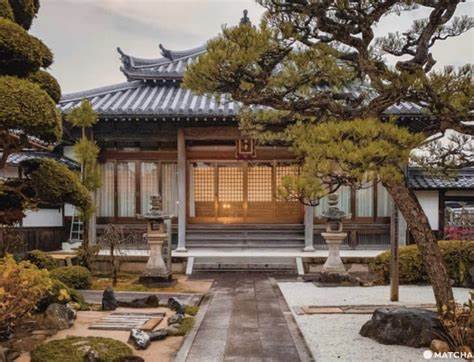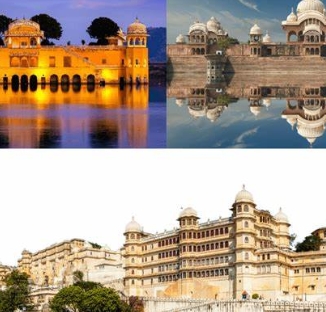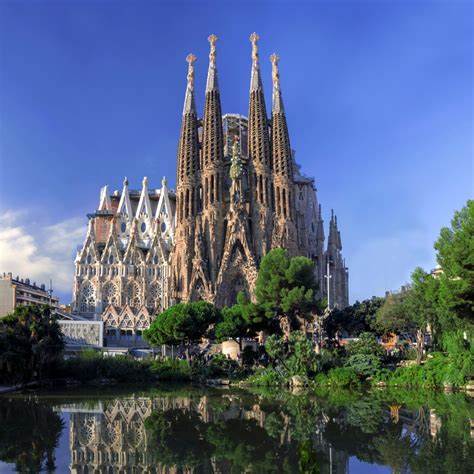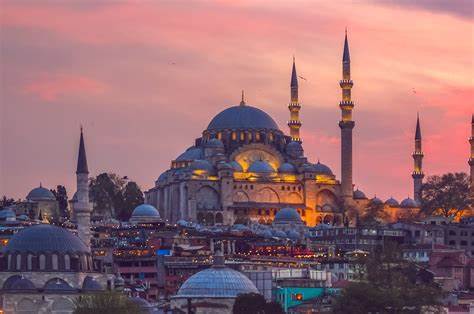Kyoto, once the capital of Japan for over a thousand years, is a city that embodies the country’s rich cultural heritage. Renowned for its temples, shrines, gardens, and traditional tea houses, Kyoto offers a peaceful escape into Japan’s past, while still embracing its present. This city, where ancient customs meet modern life, is a must-visit destination for anyone wanting to experience the true soul of Japan.
Best Time to Visit Kyoto
Kyoto is beautiful year-round, but the best times to visit are during spring (March to May) and autumn (September to November). In spring, the cherry blossoms paint the city in pink, while autumn brings vibrant red and orange hues as the leaves change color. Summer can be hot and humid, though it’s a lively time for festivals. Winter, while colder, offers a serene beauty with fewer tourists and crisp, clear skies.
How to Get There
Kyoto is located just 30 minutes by train from Osaka and around 2.5 hours from Tokyo. The Shinkansen (bullet train) is the most convenient and fastest way to travel to Kyoto from Tokyo, while the JR lines from Osaka or Kobe are also direct and comfortable. Kyoto’s main train station, Kyoto Station, is a modern and well-connected hub with buses and subways linking you to various parts of the city.
Top Attractions in Kyoto
- Kinkaku-ji (Golden Pavilion)
- One of Kyoto’s most iconic landmarks, Kinkaku-ji, or the Golden Pavilion, is a Zen Buddhist temple covered in gold leaf. The temple sits by a tranquil pond, creating a stunning reflection that has made it one of the most photographed sites in Japan. The surrounding gardens are equally beautiful and offer a peaceful setting for a reflective walk.
- Fushimi Inari Taisha
- Famous for its thousands of red torii gates, Fushimi Inari Taisha is one of Japan’s most visited shrines. Located at the base of Mount Inari, the shrine is dedicated to the Shinto god of rice, Inari. Visitors can walk through the torii gates and hike up the mountain to explore smaller shrines and enjoy panoramic views of Kyoto. The experience is both spiritual and scenic, offering unique photo opportunities.
- Arashiyama Bamboo Grove
- Arashiyama’s Bamboo Grove is a mesmerizing natural wonder, with tall bamboo stalks creating a tranquil, almost otherworldly atmosphere. The bamboo forest is located in the Arashiyama district, an area that also offers plenty of temples, such as Tenryu-ji, and scenic views of the Togetsukyo Bridge over the Hozu River. You can rent a bike to explore the area or simply wander through the grove for a peaceful retreat.
- Kiyomizu-dera
- Kiyomizu-dera, a UNESCO World Heritage site, is a Buddhist temple with a history that dates back to the 8th century. Famous for its large wooden stage that juts out over a steep hillside, Kiyomizu-dera offers breathtaking views of the city, especially during the cherry blossom season. The temple is also home to the famous Otawa Waterfall, where visitors drink from three streams that represent love, longevity, and success.
- Gion District
- The historic Gion district is Kyoto’s most famous geisha district, where you can experience traditional tea houses, narrow cobblestone streets, and old wooden machiya houses. Walking through Gion feels like stepping back in time, and if you visit in the evening, you might catch glimpses of geishas and maikos (apprentice geishas) hurrying to their appointments.
- Nijo Castle
- Nijo Castle is a beautiful example of feudal-era architecture, famous for its “nightingale floors”, which chirp when walked upon to alert the castle’s occupants of intruders. The castle grounds are expansive, featuring Japanese gardens, historical murals, and elegant interiors. It is a great place to learn about Japan’s samurai culture and the country’s feudal past.
Things to Do in Kyoto
- Visit the Temples and Shrines
- Kyoto is home to over 1,600 temples and shrines, each with its own unique history and beauty. From the iconic Ginkaku-ji (Silver Pavilion) to the serene Ryoan-ji with its famous Zen rock garden, there’s always a new temple to explore. Visiting these spiritual sites offers insight into Kyoto’s role as the heart of Japan’s Buddhist and Shinto traditions.
- Explore Traditional Tea Ceremonies
- Kyoto is a hub for Japan’s tea culture. You can experience a traditional Japanese tea ceremony, a ritual that involves the preparation and presentation of matcha (green tea) in a peaceful, respectful manner. Numerous tea houses around the city offer authentic tea ceremonies, where visitors can learn about the art of tea while enjoying its subtle flavors.
- Take a Boat Ride on the Hozu River
- For a more relaxed experience, take a boat ride on the Hozu River in Arashiyama. You can hire a traditional wooden boat, rowed by a guide, as you drift through lush forests and past historical landmarks. This serene journey offers an entirely different perspective of the region’s beauty, especially during the spring and autumn months when the foliage is at its peak.
- Cycle Around the City
- Kyoto is an excellent city for cycling, with many scenic bike paths and designated bike lanes. Rent a bicycle and explore the city at your own pace, visiting temples, shrines, and parks. You can cycle around the Kamo River, stopping at cafes, or make your way to the peaceful Philosopher’s Path, a scenic walk lined with cherry trees and temples.
- Enjoy Kyoto’s Cuisine
- Kyoto is known for its refined and delicate cuisine. You can sample kaiseki, a multi-course meal that emphasizes seasonal ingredients, or enjoy yudofu, a tofu-based dish often served in temples. Matcha-flavored sweets and tea are also popular, and you’ll find a variety of matcha-based desserts like ice cream, cakes, and even savory dishes.
- Shop for Souvenirs
- Kyoto is an excellent place to shop for traditional Japanese crafts. You’ll find beautiful hand-painted fans, silk kimonos, pottery, and delicate paper lanterns. The Nishiki Market is a great place to find local food products, while Gion and the Shijo-dori shopping street offer plenty of opportunities for souvenirs and artisan goods.
What to Pack
- Comfortable shoes: Kyoto is best explored on foot or by bike, so comfortable walking shoes are a must.
- Weather-appropriate clothing: The city’s weather can be hot in summer and cold in winter, so pack accordingly. A light jacket or sweater is advisable for evenings in spring and autumn.
- Camera: Kyoto is one of the most photogenic cities in Japan, so bring a camera to capture the beauty of its temples, gardens, and traditional streets.
Travel Tips
- Respect local customs: Always be respectful when visiting temples and shrines. Be quiet, remove your shoes when necessary, and refrain from touching sacred objects.
- Language: While many signs are in English, it’s helpful to learn a few basic Japanese phrases, such as “Arigatou” (thank you) and “Sumimasen” (excuse me).
- Stay in a Ryokan: For an authentic experience, stay in a ryokan (traditional Japanese inn), where you can enjoy tatami mats, futons, and a traditional multi-course dinner.
Why Visit Kyoto?
Kyoto is a city of timeless beauty, where ancient traditions live harmoniously with modern life. Its breathtaking temples, scenic gardens, and historical streets offer an unforgettable glimpse into Japan’s soul. Whether you’re a history enthusiast, a culture lover, or simply someone seeking serenity, Kyoto is the perfect destination to experience the authentic charm of Japan.






